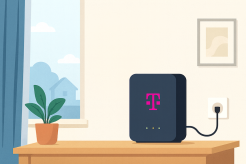How to Lower Your Internet and Cable Bills: Smart Saving Strategies

If you’re tired of seeing those monthly charges drain your wallet, you're not alone. Fortunately, there are several smart strategies you can use to lower your internet and cable bills. Let’s dive into some effective tips to help you save money without sacrificing your favorite shows or high-speed internet.
1. Evaluate Your Current Plan
The first step to saving money is understanding what you’re currently paying for. Many people are unaware of the details of their internet and cable plans. Review your latest bill and note the charges. Compare it to the advertised rates on your provider's website. Sometimes, you might find that you’re paying for services you don’t need or use.
2. Negotiate with Your Provider
Don’t be afraid to call your internet and cable provider to negotiate a better rate. Providers are often willing to offer discounts to retain customers. Mention any promotional rates you’ve seen from competitors and ask if they can match or beat those prices.
3. Bundle Services
Bundling your internet and cable services can often lead to significant savings. Many providers offer discounts for customers who subscribe to both services. Check out the best TV and internet bundles to find deals that can reduce your overall costs.
4. Reduce Your Speed or Channel Package
If you’re not using the highest internet speeds available, consider downgrading to a slower, more affordable plan. The same goes for your cable package. If you only watch a few channels, switch to a smaller, cheaper package.
5. Use Streaming Services
Cutting the cord entirely and switching to streaming services can be a cost-effective alternative to traditional cable. Services like Netflix, Hulu, and Amazon Prime offer a wide range of content for a fraction of the cost. You can still stay updated on current shows without the hefty cable bill.
6. Take Advantage of Promotions and Discounts
Keep an eye out for promotions and discounts from your provider. Sometimes, switching to a new plan or signing a contract can lead to significant savings. Websites like Cheap Internet Service Provider often list the latest deals and offers from various providers.
7. Purchase Your Own Equipment
Renting a modem or router from your provider can add an extra $10-$15 to your bill each month. Instead, consider purchasing your own equipment. While there’s an upfront cost, you’ll save money in the long run by eliminating rental fees.
8. Utilize Customer Loyalty Programs
Some providers offer loyalty programs that reward long-term customers with discounts or perks. Ask your provider if they have any such programs and how you can benefit from them.
9. Explore Low-Income Assistance Programs
If you’re struggling to pay your bills, you might qualify for low-income assistance programs. Programs like Lifeline provide discounts on internet and phone services for eligible low-income households.
10. Be Wary of Hidden Fees
Always read the fine print in your service agreement. Providers often add hidden fees to your bill. Understanding these charges can help you negotiate a better rate or switch to a provider with more transparent pricing.
11. Compare Providers
It’s worth comparing rates and services from different providers periodically. Use websites that compares plans and find the best deals in your area.
12. Understand Why Prices Increase
Understanding the reason behind regular raises of internet service can help you anticipate and manage future cost increases. Factors like infrastructure upgrades, increased content costs, and regulatory changes often contribute to price hikes.
13. Cut Unnecessary Services
Evaluate if you need additional services like premium channels, international calling, or extra data. Cutting these unnecessary services can significantly reduce your bill.
14. Use Data Caps to Your Advantage
If your provider offers plans with data caps, and you don’t use much data, these plans can be cheaper. Just be mindful of your usage to avoid overage fees.
15. Regularly Review and Adjust Your Plan
Your needs may change over time, so it’s important to regularly review your internet and cable usage. Adjust your plan as necessary to ensure you’re not overpaying for services you don’t use.
Conclusion
Lowering your internet and cable bills is all about being proactive and informed. By evaluating your current plan, negotiating with your provider, and taking advantage of discounts and bundles, you can significantly reduce your monthly expenses. Remember, the goal is to find a balance between cost and the services you need.
For more tips and strategies on saving money on your internet and cable services, visit Cheap Internet Service Provider.
Related Posts

Fri, Nov 21, 2025 7:39 AM
Internet BundlesTop Internet Providers for Small Businesses Today
Discover the top internet providers for small businesses, including Verizon, AT&T, Spectrum, Comcast, and Viasat. Compare speeds, features, pricing, and reliability to find the best connection for your business.

Fri, Nov 21, 2025 4:00 AM
Internet BundlesBest Rural Internet Providers in the US: What to Know Before You Choose
We have schedules, rates, and pricing for the top three big internet providers in rural America. Since few internet providers create networks in small towns, your internet choices in rural areas are minimal. In rural America, however, Xfinity, CenturyLink, and Viasat all provide internet access.

Wed, Nov 19, 2025 10:57 PM
Broadband InstallationHow to Set Up T-Mobile 5G Home Internet
Learn how to set up T-Mobile 5G Home Internet with a step-by-step guide. Includes placement tips, activation steps, speed testing, and troubleshooting advice.

Tue, Nov 18, 2025 12:00 AM
RegulationsKinetic by Windstream Data Caps: What You Really Need to Know
Get the facts about Windstream data caps, how they work, what limits apply, and what this means for your internet usage. Learn whether Windstream truly offers unlimited data and what to expect.

Mon, Nov 17, 2025 9:29 PM
Internet BundlesAffordable Internet Options for Low-Income Families
Discover affordable internet programs for low-income families. Learn about AT&T Access, Cox Connect2Compete, Frontier, Google Fiber, Mediacom, and Spectrum Internet Assist, and find out how to qualify for discounted plans.